Conservation is a family activity for the Walker family on Great Barrier Island. Alison Walker’s grandson Ari is only 3 ½ years old, but he’s already doing his bit.
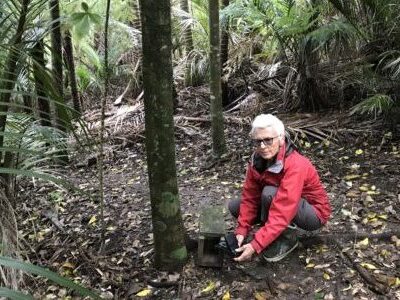
“He loves to check the trap boxes,” says Alison, “and calls out ‘rat here, Nana’ or ‘no rat’. Even since he could walk he’s been all over the property with Samantha (Alison’s daughter-in-law). He can do 3km!”
Three kilometres is no mean feat for a three-year-old on steep tracks down into gullies, in an often rocky terrain.
“I used to be into running and cycling,” says Alison. “There’s no time for that now, but my fitness is really good. There are some very steep tracks and it’s so peaceful.”
Three generations of Alison’s family live together at Great Barrier for at least part of every year, including son Nick, his partner Samantha and grandsons Zephyr, 8 years old, who goes to the local primary school and three-year-old Ari.
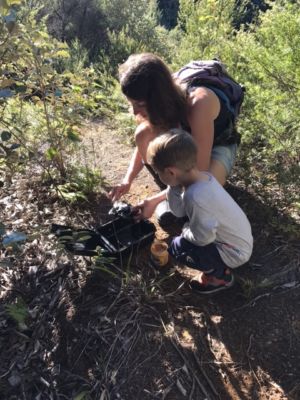
“Zephyr’s also keen on conservation and sea-life,” says his proud grandmother. “They do a lot of conservation in the teaching programme at school.”
Alison and Brian along with Nick , Samantha and two mates Andrew and Ken bought the 33 hectare property back in 2005, but had often tramped on Great Barrier prior to that.
“Nick has been a keen surfer since he was 11 years old. We were living on Waiheke, but made annual trips to Great Barrier,” Alison explains. “Nick encouraged us to buy a property so that he could surf and as soon as we saw this, we fell in love with the view to Rakitu Island. It also looks across to Windy Canyon (DOC land) and down to the Okiwi basin.”
The first few years were spent ‘dealing with the house’ which was unlined.
“We were aware that rats were a problem from the beginning,” says Alison, “but initially just wanted to keep them out of the house. We’d come back to the island after six months and find there had been rodents inside. There would be tinfoil remnants and droppings everywhere. And when you opened the compost you’d see dozens of mice. We bought brodifacoum and put 20 bait blocks out. They vanished overnight and the same happened the next night.”
Alison thinks it was about 5-7 years before her family started to think seriously about pest management.
“We were quite disappointed at the lack of birdlife,” she says. “There was one very territorial kingfisher pair breeding and that was all. We used to see kaka high in the sky – but now they come and land in the trees. Tui, silver eye and ruru are breeding and kereru come close to the house.”
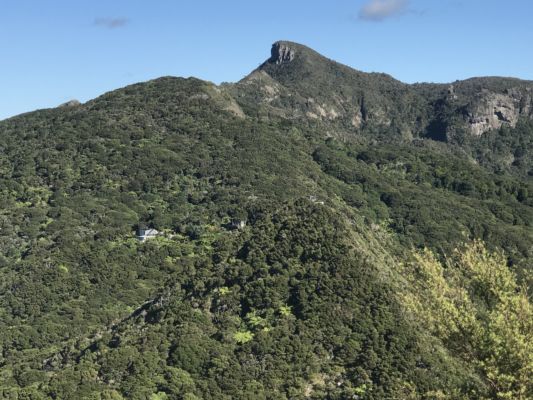
Unfortunately, Alison’s property is surrounded by land where no predator control is carried out, in part due to absentee owners.
“There are large blocks of land with no housing,” Alison explains. “People camp there when they visit. And a lot of Barrier people are just busy living.”
So when one batch of rats are killed, more move in.
“The rats keep coming,” Alison admits, “but the cheering thing is there are lots of seedlings now. We’re making a difference to rat density. We planted 200 trees around the property and propagated seed ourselves. But now seedlings are coming up on their own.”
Alison credits local contractor Stuart Farquhar for much of the success of their restoration efforts.
“Stuart’s here all year round and drives things,” says Alison. “He’s cleared tracks and built new ones. It’s very hard work on steep, rocky, difficult terrain. In the past three years we’ve established 5km of track with 180 rodent boxes and snap traps.”
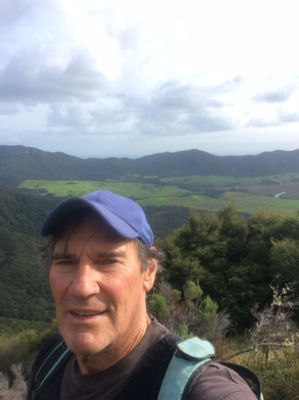
In the process, they’ve learnt a lot more about their land.
“Initially locals had a look at the bush and thought it was just regenerating manuka,” says Alison. “The land had been farmed up until 1960. But as Stuart’s built tracks, he’s discovered old kanuka, large nikau and punga groves, one huge rimu and six very large kauri. The trees in the valleys are mature forest that escaped the burnoffs when the land was cleared for farming last century. At first there were no seedlings in the nikau grove, but now it’s regenerating.”
Alison acknowledges the strong support that Auckland Council has given to predator control on Great Barrier.
“They were very proactive and gave out bait stations,” Alison says. “Then we bought more. They provided funding that allowed us to start doing predator control on a bigger scale. We had 50 stations using traps and poison.”
But that was just the beginning. Stuart’s work has been made possible by a successful application to DOC’s community partnership fund.
“To our surprise we got funding for three years,” says Alison. “It’s a dollar for dollar commitment which means we’ve got a good budget to employ Stuart.”
Success didn’t happen overnight, however.
“We were despondent for a while, but now the birds are coming closer. And the best thing this summer has been finding petrel burrows!” says Alison. “We had always heard black petrels at night, then Joanna Sim visited and found two burrows. Since then Stuart has found up to 10 burrows under the old puriri trees and one (abandoned) petrel egg that was out in the open.”
Rats continue to be trapped and poisoned in numbers – 60 last March (up from 40 in 2016) and 90 in April (up from 60 in 2016).
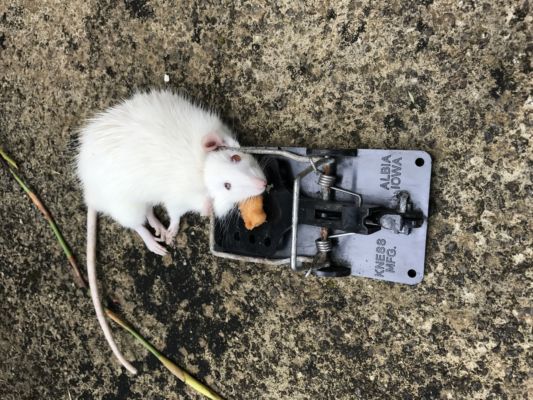
“There’s one property below us that had D-block (diphacinone) put out this year” Alison says. “My next move is to encourage more property owners to adopt some pest control.
It’s a good start. And not only does getting rid of rats bring conservation benefits – it can also bring some quite surprising discoveries.
“The most bizarre thing this year was a rat we caught in the trap in our carport. It was a white, albino ship rat with pink eyes. It was definitely a ship rat – it had a tail twice the length of its body and a narrow head,” Alison confirms.
Pet rats – which include albinos – are a strain of Norway rat, so this ship rat was a naturally occurring albino, not a released pet.
“John Ogden, a retired Professor of Ecology who has lived on the island for years says he’s never seen one before,” Alison says.
Alison is keen to hear if any other trappers have encountered albino ship rats, so if you or your predator control group has caught anything unusual, do let us know.
TIP TO SHARE
Alison swears by SnapE traps with a peanut butter lure. “The trap lasts well and the SnapE catches better (a cleaner kill) than a previous trap we tried.”
NOTE: The SnapE trap has yet to be assessed by NAWAC as an approved humane trap. The T-Rex or Victor pro are good alternatives.

